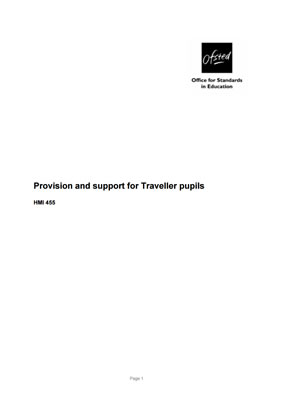
Provision and support for Traveller pupils, Ofsted, 2003
Publication type: Report | Author: Other | Themes: Report
This report provides a background to the provision and support for education to Gypsy and Traveller pupils.

Publication type: Report | Author: Other | Themes: Report
This report provides a background to the provision and support for education to Gypsy and Traveller pupils.